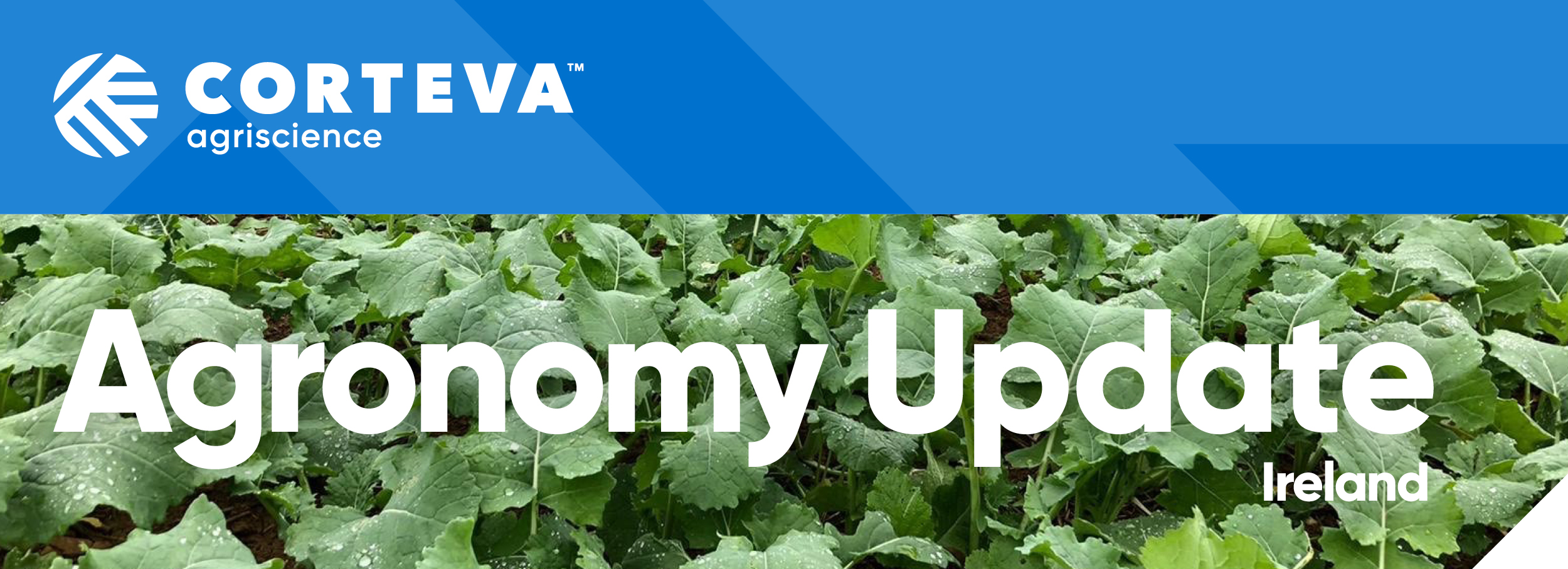
|
|
|
In the March edition
- Oilseed rape crops and final Korvetto applications this spring
- Why spring is a good time to apply a nitrification inhibitor
- New for spring 2025: Manhattan herbicide for grass and broad-leaved weed control in cereals
- Broad-leaved weed control in spring cereals with Arylex
- Fungicide planning important to fulfilling wheat crop’s potential
- Verticillium stem stripe resistance in WOSR
- BlueN performance in the field
- Other recent key news and updates
- Update your communications preferences, enter our monthly prize draw plus ways to earn IASIS points
|
|
|
Oilseed rape crops and final Korvetto applications this spring
Oilseed rape crops are starting to move after a slow start with an extended window this year for Korvetto® applications due to the slow growth. Generally, growth stages of oilseed rape are still allowing for a Korvetto application if weeds have germinated or were not fully controlled in autumn.
|
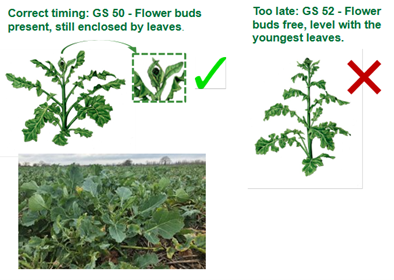
|
As long as the plant has a physiological stage of GS30 plus, then Korvetto can be applied whether leaves are present or not. Crops that have suffered pigeon damage will be stressed and spraying any crop protection products will add to the stress. Therefore, minor effects such as a check in growth may occur but this shouldn’t be long lasting.
|
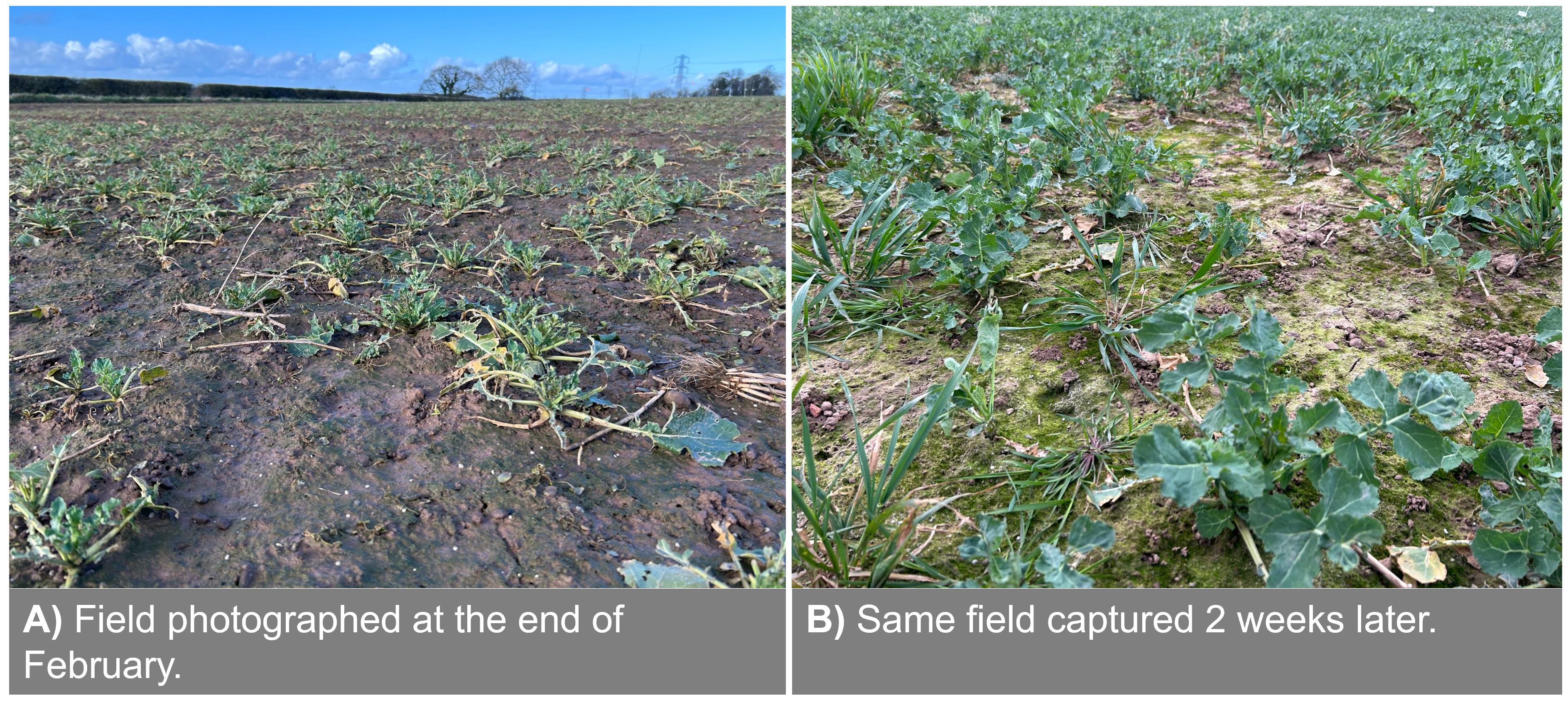
|
|
|
Why spring is a good time to apply a nitrification inhibitor
Spring is a good time to apply a nitrification inhibitor as soil temperatures are starting to warm up and ammonium is converted to nitrate more quickly.
Instinct®, containing Optinyte™ technology, slows down the nitrification processes; reducing environmental loss and ensuring more ammonium is available for plants to take-up.
Instinct application results in:
✔️ More ammonium retained in the soil.
✔️ Less nitrate lost to leaching.
✔️ Less NOx gas emissions (de-nitrification losses).
✔️ More nitrogen in the soil for longer.
|
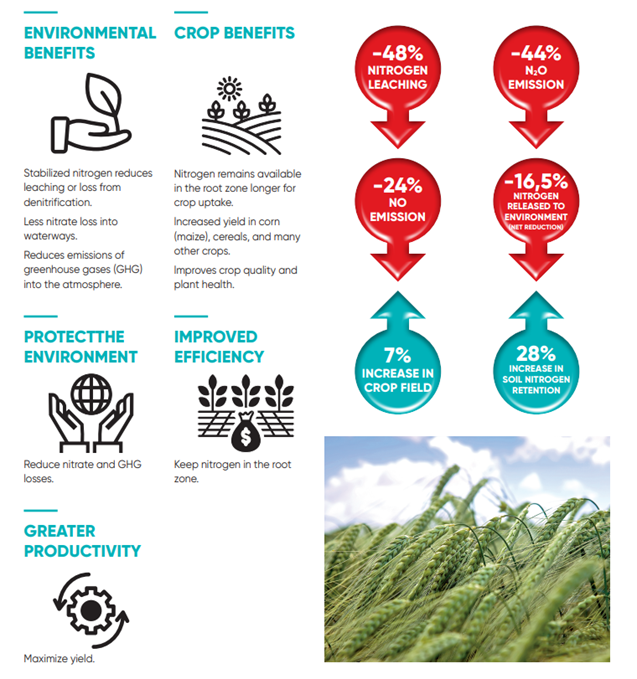
|
Maize is an ideal crop for Instinct, giving consistent yield responses over many years.
- It can be used with all types of nitrogen fertilisers (ammonium nitrate, urea, liquid UAN, manures, slurries and digestate).
- Can be applied before, with, or after nitrogen application. For optimal performance, apply early in the season within 10 days of nitrogen fertiliser application.
- Mechanically incorporate into the seedbed before drilling or apply with pre-em herbicide which will need incorporation by rainfall (12mm within 10 days of application).
- And it has an extensive list of tank mix partners.
Instinct can be used in multiple crops such as cereals, oilseed rape, maize, potatoes, sugar beet and grassland.
|
|
|
New for spring 2025: Manhattan herbicide for grass and broad-leaved weed control in cereals
Manhattan® represents a significant evolution from Broadway® Star – the herbicide currently favoured by many tillage farmers – as it now contains Arylex™ in combination with pyroxsulam and florasulam, taking already proven and powerful chemistry to new highs.
Arylex™ is a unique molecule in the arylpicolinate family of auxin mimics which gives consistent control of challenging weed species within difficult conditions that do not favour other chemistries. One of its key characteristics is a rapid speed of kill and fast degradation time in soil.
Including it in the formulation creates an even broader spectrum of target weeds which includes bromes, wild and tame oats, ryegrass (from seed) as well as poppy, speedwells, chickweed, mayweed, cleavers, fumitory, and a number of umbellifer, polygonum and brassica species.
Manhattan is formulated as a wettable granule in a five-hectare pack and should be applied at a rate of 100g/ha with a suitable adjuvant.
There are no following crop restrictions and the wide application window spans autumn and spring from growth stage 12 through to 32. There is a broad tank mix list, and the product is extremely safe on crops.
Manhattan is an easy-to-use product, with flexible use and delivering one of the widest spectrums of both grass and broad-leaved weed control.
More information will be provided as the season progresses. Contact Whelehans or the Corteva hotline for more information, or visit the product page here.
|

|
|
|
Broad-leaved weed control in spring cereals with Arylex
Spring cereals are being drilled across the country. These are often less competitive than winter cereals and face different weed pressures, including increased broad-leaved weed burdens from spring germinating species, such as fat hen, orache, black-bindweed and polygonums. Cleavers, groundsel, fumitory and chickweed also pose a significant threat to the crop if left unmanaged.
At a time of year when crop development is fast and workloads are stretched, a robust herbicide programme is key to getting on top of these weeds.
Arylex™ should be the building block of any spring herbicide programme this season, with market leading efficacy, application flexibility, great crop safety and no following crop restrictions. With its unique mode of action, Arylex controls a wide range of difficult species, including cleavers, fumitory and fat hen. It controls ALS resistant poppy too.
Pixxaro® and Zypar® both contain Arylex and are contact-acting herbicides which can be applied up to GS45 in both winter and spring cereals. Both offer dose rate flexibility based on target species as well as reliability in challenging conditions.
In spring barley, if required, an SU partner that contains thifensulfuron-methyl and metsulfuron-methyl can be added to boost the activity of polygonums, umbellifers and brassica species.
Zypar is more active on brassicas than Pixxaro, because it contains florasulam, rather than fluroxypyr. Pixxaro would be the preferred option to control ALS resistant chickweed, where fluroxypyr comes into its own.
Control of umbelliferous weeds such as bur chervil and cow parsley will also be improved by the addition of an SU, if Zypar cannot be applied when the weeds are small.
Both products come with a wide range of supported tank-mix compatibilities that include PGR’s, fungicides, trace elements and other herbicides to allow tailoring for field specific situations.
For best results, target weeds early, when small and actively growing, to remove yield robbing weeds before they impact the crop.
|
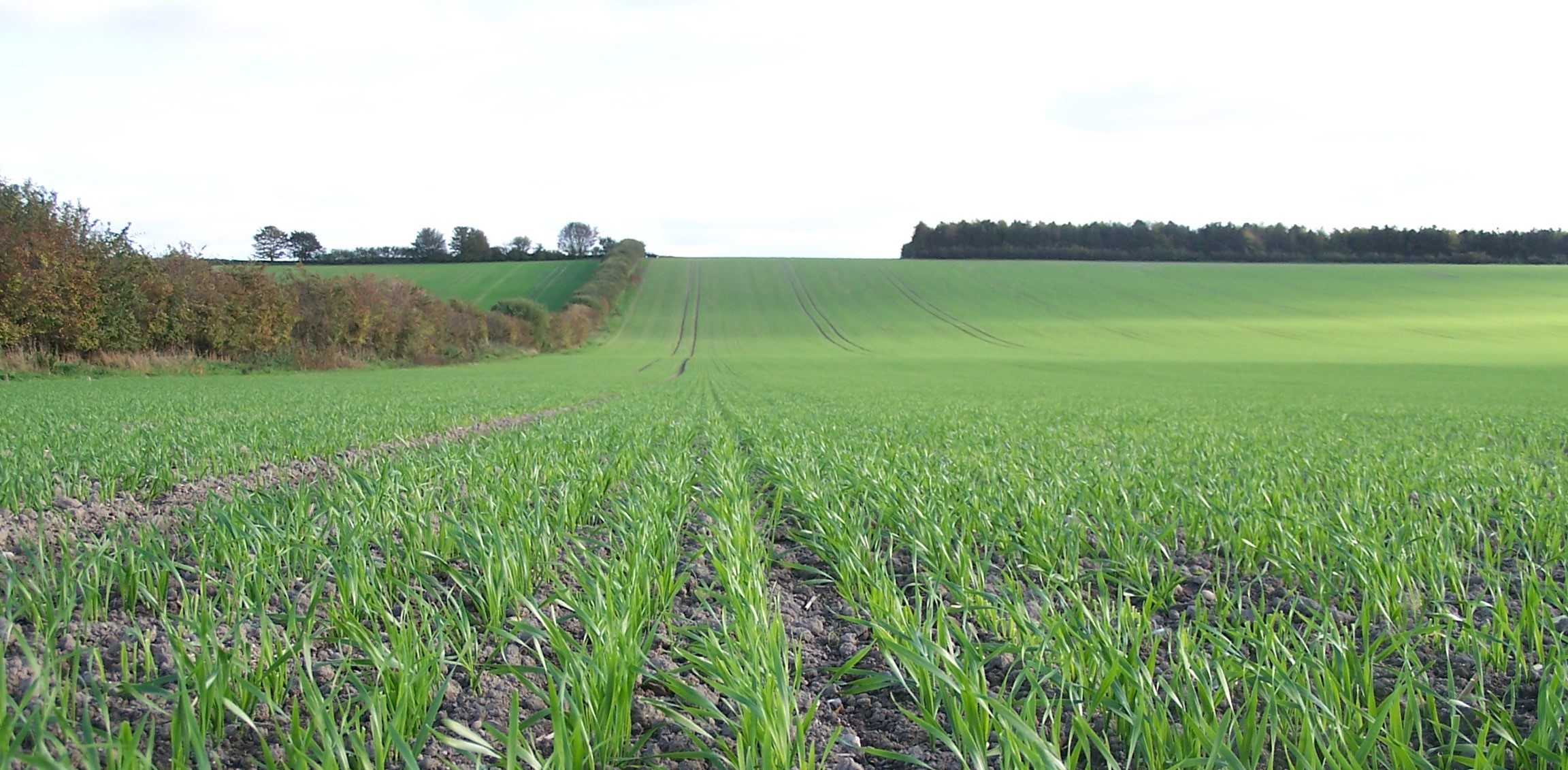
|
|
|
Fungicide planning important to fulfilling wheat crop’s potential
With Irish wheat crops off to a good start, independent experts have outlined the importance of timing and product choice in keeping diseases at bay.
Autumn sowings took place in good conditions following two desperately difficult years for tillage farmers to get winter cereals in the ground and free from yield-robbing septoria and rusts.
But as temperatures begin to rise going into the spring, disease control experts from Teagasc and University College Dublin say the next two months will be crucial.
“Most fields are complete and there is no patchiness, so the crops have good potential at the moment,” says Steven Kildea, Research Officer with Teagasc.
Tom McCabe, University College Dublin's crops specialist, says that pressure from septoria and rusts ramped up in 2023 and 2024 due to heavy rain disrupting the optimum spray timings.
“The biggest problem Irish farmers had was getting the T1 timing correct, as there has been a lot of rainfall during those key periods,” Tom said.
Both Steven and Tom have advised growers to take into account the disease rating of the varieties sown, the sowing date, weather conditions and the visible presence of septoria and rusts when planning their T0, T1 and T2 fungicide sprays.
Trials work carried out over a number of years at Teagasc and UCD have shown Steven and Tom the consistency delivered by Corteva Agriscience’s Questar™ fungicide.
Its robust activity on the main diseases found in Irish wheat fields means green leaf area is maximised, laying the foundations for greater yields.
Questar can be applied to all varieties of wheat, durum wheat, rye, triticale and spelt, providing robust control of septoria and rusts.
The full label rate is 2.0l/ha but the rate applied by each grower will depend on a number of agronomic factors, such as variety, sowing date, location and weather patterns leading up to application. Questar must be mixed with a partner product as part of an anti-resistance strategy and to broaden the spectrum of the application
Read the article here or watch the video below.
|
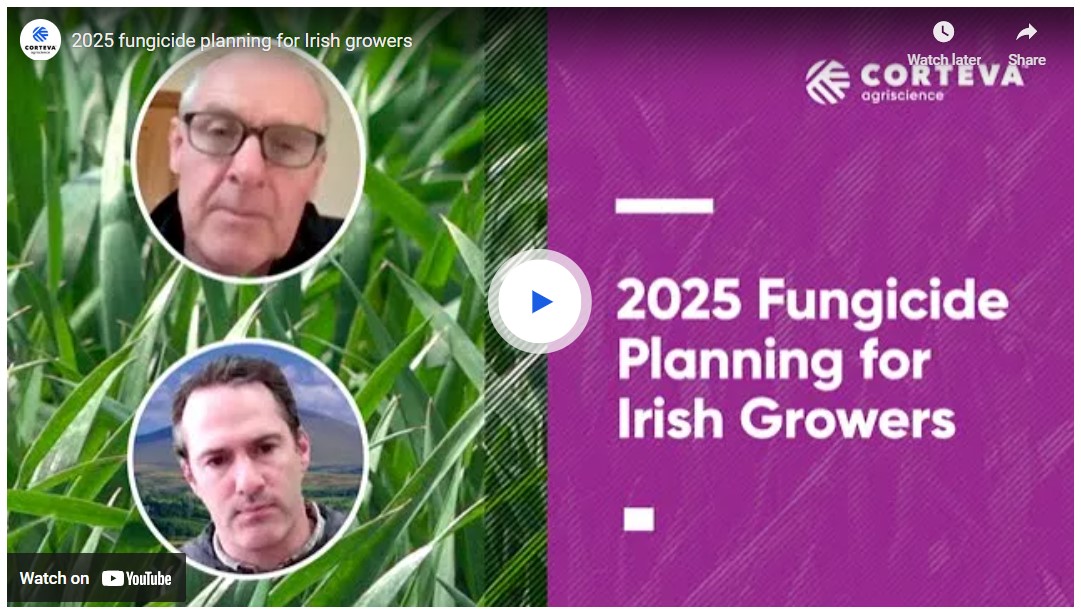
|
|
|
Verticillium stem stripe resistance in WOSR
Verticillium stem stripe, caused by the fungus Verticillium longisporum, has become widely recognised as a significant threat to oilseed rape production in the UK, with especially high levels observed in eastern England. This fungus produces numerous microsclerotia on the stems of affected plants, which can survive in the soil for extended periods. Managing this disease is challenging due to the lack of effective fungicide treatments. The presence of Verticillium Stripe can lead to significant yield reductions in the field.
A 2024 trial by ADAS screened WOSR varieties on their susceptibility to Verticillium stem stripe. The experiment was conducted under field conditions at a site near Huntingdon, Cambridgeshire, where high levels of Verticillium longisporum have been previously reported.
|
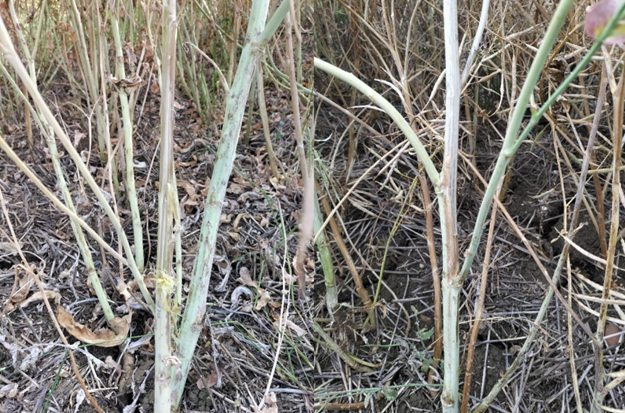
|
|
|
|
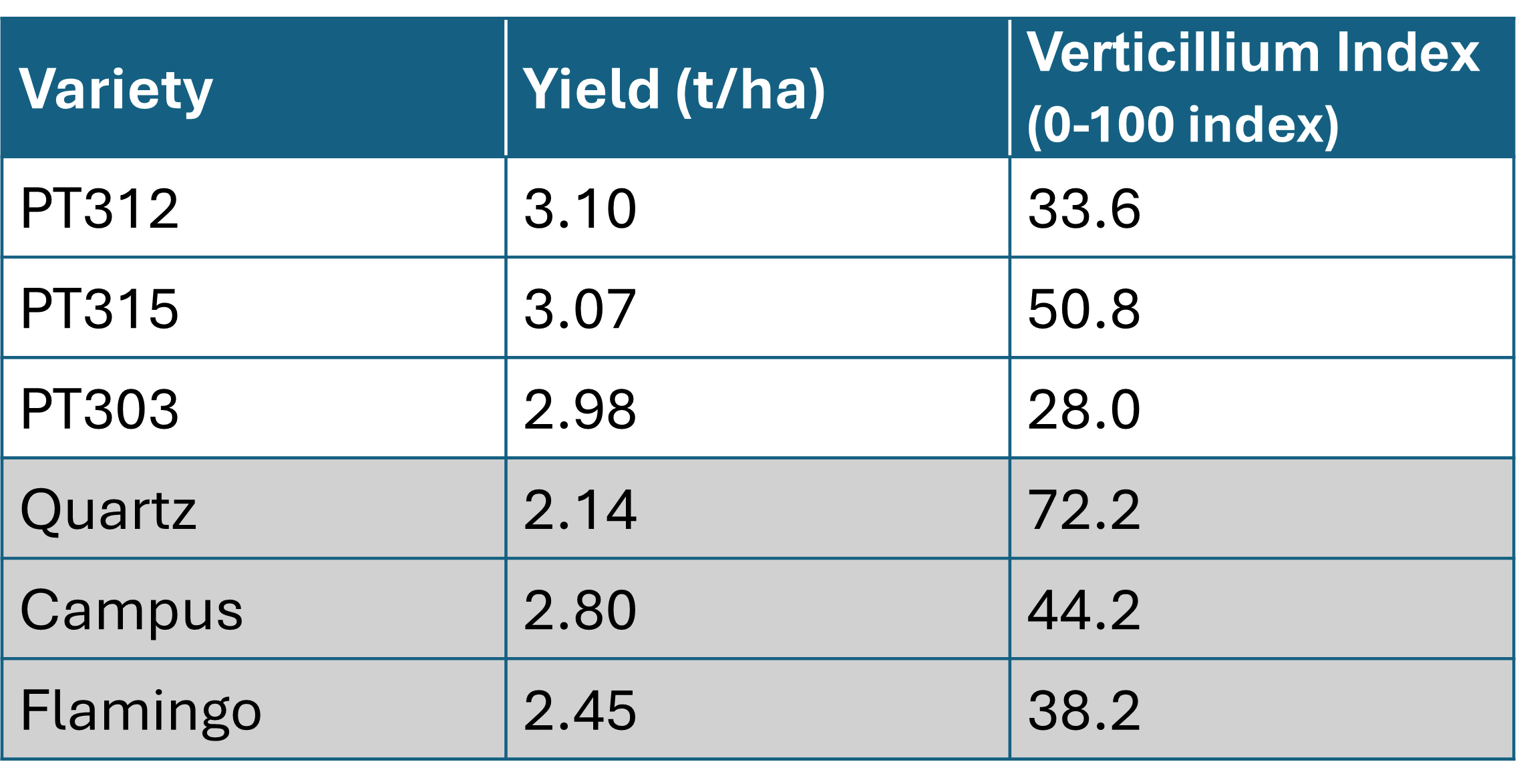
|
In the trial PT312 and PT303 showed a moderate Verticillium severity score, suggesting these varieties could be partially resistant against Verticillium. PT315 had a Verticillium severity score similar to the intermediate standard variety, suggesting that this could also be moderately resistant.
PT312, PT315 and PT303 showed a statistically higher yield to the partially resistant standard hybrid and comparable yield to the intermediate standard hybrid. This suggests that these Pioneer varieties have good resistance or tolerance against Verticillium.
|
|
|
BlueN performance in the field
BlueN™ is a nutrient efficiency biostimulant for use in a broad range of crops including potatoes and sugar beet. It contains Methylobacterium symbioticum, a bacteria found in nature, which fixes nitrogen from the air and converts it to ammonium for the plant.
Find out more about BlueN by reading our latest case studies:
Andrew Houghton, a farmer from Doncaster, was initially sceptical about using biologicals. However, after trying BlueN, he witnessed significant yield increases in his potato crop and is now a firm believer in its benefits. Read more about Andrew's experience here.
Sam Myhill of MB Farming Ltd also saw remarkable results with BlueN. Using biostimulants for the first time last year, he reported a 29% increase in yield in his sugar beet crop. Discover Sam's story here.
|
|
|
Other recent key news and updates
Farming touches all STEM subjects and helps inspire the next generation to pursue crucial careers. Our #TeamCorteva scientists each bring a unique background and broad-ranging experience to our R&D team. Meet the scientists based at our Global Field Research Centre in Wellesbourne, Warwickshire, and read their stories here.
|

|
Globally, Corteva invests nearly $4 million in innovation every day and employs approximately 22,500 people worldwide, with more than 5,000 dedicated to finding and delivering next-generation innovation. This is done at over 100 research sites and 2,000 testing locations worldwide.
|
|
|
Want to hear more from us?
Update your preferences and tailor your choices to make sure you receive the communications that are right for you. Don't forget to enter into our monthly prize draw by ticking the box before submitting to be in with the chance to win!
You can also stay in the loop with all the latest updates by following us on X and Facebook.
Discover the science driving agricultural innovation with Agriscience Explained. This podcast, developed by our global team, visits with both scientists and farmers about how agricultural innovations are discovered, developed and deployed on the farm. Don’t miss an episode! Follow Agriscience Explained on your favourite podcast platform.
|

|
|
|
Ways to stay in touch
Area Manager and National Technical Manager: Liz Glynn, 00353 (86) 844 5306.
Visit our website www.corteva.ie for product information, labels and advice.
Our hotline team are on hand to answer any queries or concerns you have.
|
|
|
10 IASIS points will be awarded to those subscribing to this Agronomy Update.
|
USE PLANT PROTECTION PRODUCTS SAFELY. Always read the label and product information before use. PAY ATTENTION TO THE RISK INDICATIONS AND FOLLOW THE SAFETY PRECAUTIONS ON THE LABEL. Triple Rinse Containers and Invert to Dry at Time of Use. For further information including warning phrases and symbols refer to label. Corteva Agriscience UK Limited, Unit H4, Building H, Melbourn Science Park, Cambridge Road, Melbourn, Cambridgeshire, SG8 6HB. Tel: 01462 457272. ®, ™ Trademarks of Corteva Agriscience and its affiliated companies. All other brand names are trademarks of other manufacturers for which proprietary rights may exist. All manufacturers tradenames and trademarks are duly acknowledged. © 2025 Corteva. Korvetto® contains clopyralid and halauxifen-methyl (Arylex™ active). Instinct® contains nitrapyrin. Manhattan® contains halauxifen-methyl, florasulam and pyroxsulam. Broadway® Star contains pyroxsulam and florasulam. Pixxaro® EC contains fluroxypyr and halauxifen-methyl (Arylex™ active). Zypar® contains florasulam and halauxifen-methyl (Arylex™ active). Questar™ contains fenpicoxamid. BlueN™ contains Methylobacterium symbioticum.
|
|
|
|
|